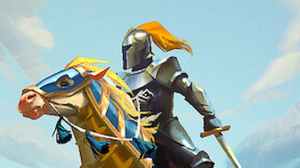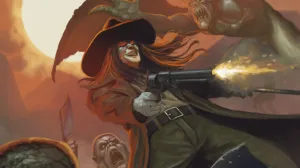This week, a brand new volume of Uncanny Avengers was released, featuring a whole new assemblage of Earth’s Mightiest Heroes. Former members Scarlet Witch, Quicksilver, Vision and Falcon/Captain America will stand alongside Rogue, longtime villain Sabretooth and the mystical Brother Voodoo.
Videos by ComicBook.com
Now, it’s true that membership to the Avengers and all of its associated spinoff groups has always been fluid and varied. But with nearly every single member of the Uncanny Avengers featuring some villainous roots, this latest incarnation of the team might be the most eclectic mix yet.
For the sake of comparison, we thought we’d run through some of the biggest roster shake-ups in Avengers history. Are Sabretooth and Brother Voodoo any crazier than Spider-Man and Wolverine?
5. Henry Peter Gyrich’s Rules (Avengers #181)
One of the key characters introduced during Jim Shooter’s tenure scripting The Avengers in the 1970s was Henry Peter Gyrich, the team’s liaison to the U.S. National Security Council. Gyrich is a notorious meddler who institutes a number of new rules on the team per mandate of the federal government. One of those rules actually makes a bit of sense – in an effort to trim down the growing roster, Gyrich demands that only seven heroes be kept on active duty at all times.
Gyrich’s other big change is a bit more uncomfortable for the group. In order to keep the group more diverse, the Avengers need to have at least one minority member on their roster. Captain America sheepishly invites the Falcon to join, who reluctantly agrees. In turn, Hawkeye is the odd man out and after years on the team is removed from the active roster.
Hawkeye’s dismissal causes a lot of tension among the team with some animosity being directed towards Falcon. Falcon isn’t exactly thrilled to be somebody’s “token” either, and he later resigns from the team as soon as Gyrich relinquishes his bureaucratic grip on the group.
4. West Coast Avengers
In 1984 Marvel introduced the first Avengers satellite team in the group’s history when it launched the four-part limited series, West Coast Avengers. This new group is founded by Hawkeye, who acts on some advice from Vision to expand the team’s sphere of influence by opening up a branch on the West Coast of the United States. Hawkeye recruits his (then) wife Mockingbird, Tigra, Wonder Man and Iron Man (who is actually James “Rhodey” Rhodes at his point in time).
The success of the miniseries eventually led to a launch of an ongoing (renamed Avengers: West Coast). Avengers founding member Hank Pym joins the group as a scientific advisor. Other members also came in and out of the team, including the Thing from the Fantastic Four. Overall, the team has proven to be very influential as it gave rise to other satellite Avengers groups like the Great Lakes Avengers, Secret Avengers and the Uncanny Avengers.
3. Cap’s Kooky Quartet (Avengers #16)
The original, and arguably the most famous roster shake-up in Avengers history, saw founding members Iron Man, Thor, Hank Pym and Janet Van Dyne take a step back from active duty to make way for the mutants (and former villains) Quicksilver and Scarlet Witch and the rogue-ish Hawkeye. Captain America would stick around to lead this group, which was soon dubbed “Cap’s Kooky Quartet.”
While the three new members would all ingratiate themselves to the Avengers rather quickly, it was still rather stunning at the time this was published (mid-1960s) to see such dramatic turnover in a superteam’s roster. Other groups – primarily DC’s Justice League – were adding to the core group, not swapping out members with virtual unknowns. But Iron Man describes it best in this issue; that the Avengers were designed to be adaptable and flexible, thereby providing opportunities for new heroes to rise to the foreground. “Cap’s Kooky Quartet” might have been a shock, but it ended up being a trendsetter for other team books throughout the industry.
2. Dark Avengers
In the wake of Secret Invasion, master of the universe (and known-sociopath) Norman Osborn assumes control of the S.H.I.E.L.D.-sanctioned Avengers team. When Osborn starts up his new government-espionage group H.A.M.M.E.R., all but Ares and Sentry leave the group, making way for Osborn to remake the Avengers in his own image. He recruits Marvel Boy to pose as Captain Marvel and Daken to imitate his father Wolverine, while bringing aboard Bullseye, Moonstone and Venom from the Thunderbolts (replacing Hawkeye, Ms. Marvel and Spider-Man respectively), leading to the formation of the Dark Avengers.
Osborn and his Avengers team inevitably overstep, specifically when they attempt to take over Asgard during the Siege storyline and are defeated and imprisoned. But the Dark Avengers are unquestionably the most evil and villainous assemblage of “Earth’s Mightiest Heroes” in Marvel history.
1. The New Avengers
In the wake of the team disbanding following the tragic “Avengers Disassembled” arc, Marvel proved you can’t keep a good (and profitable) property down when it reimagined the Avengers for a whole new generation of readers. Brian Michael Bendis created one of the craziest assemblages of heroes yet, taking stalwarts Captain America and Iron Man, and filling out the rest of the roster with Luke Cage, Spider-Woman, Sentry, and then the two big shocks, Spider-Man and Wolverine.
It’s not that making Spider-Man and Avengers was that farfetched, but after years of flirting with the idea of putting him on the team, New Avengers marked the moment Marvel finally pulled the trigger. And if that wasn’t enough star power for the new team, long-time loner/anti-hero/cantankerous Canucklehead Wolverine was recruited by Captain America to fill out the roster. So in essence, Marvel assembled nearly all of its most popular and profitable entities under one banner and built an entire new book around them.
It’s not like the company didn’t try to do this in the past (does anyone remember the Secret Defenders with Doctor Strange, Ghost Rider, Wolverine and Spider-Man), but New Avengers was definitely the first time such a hodgepodge was put together in a way that was both graceful and led to some worthwhile stories.














